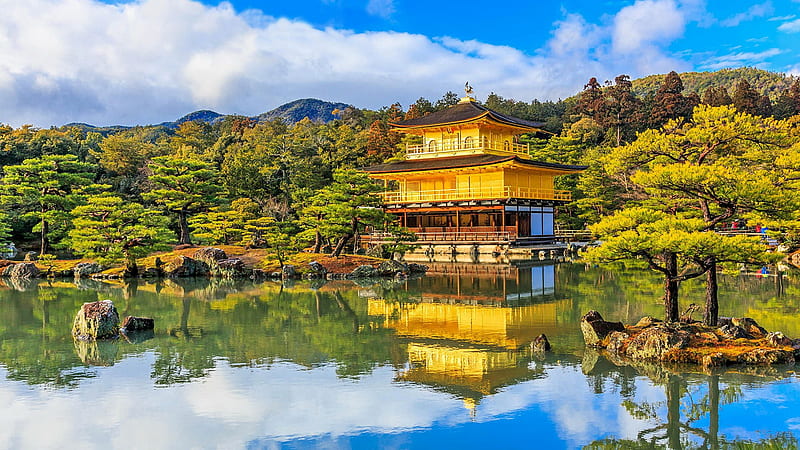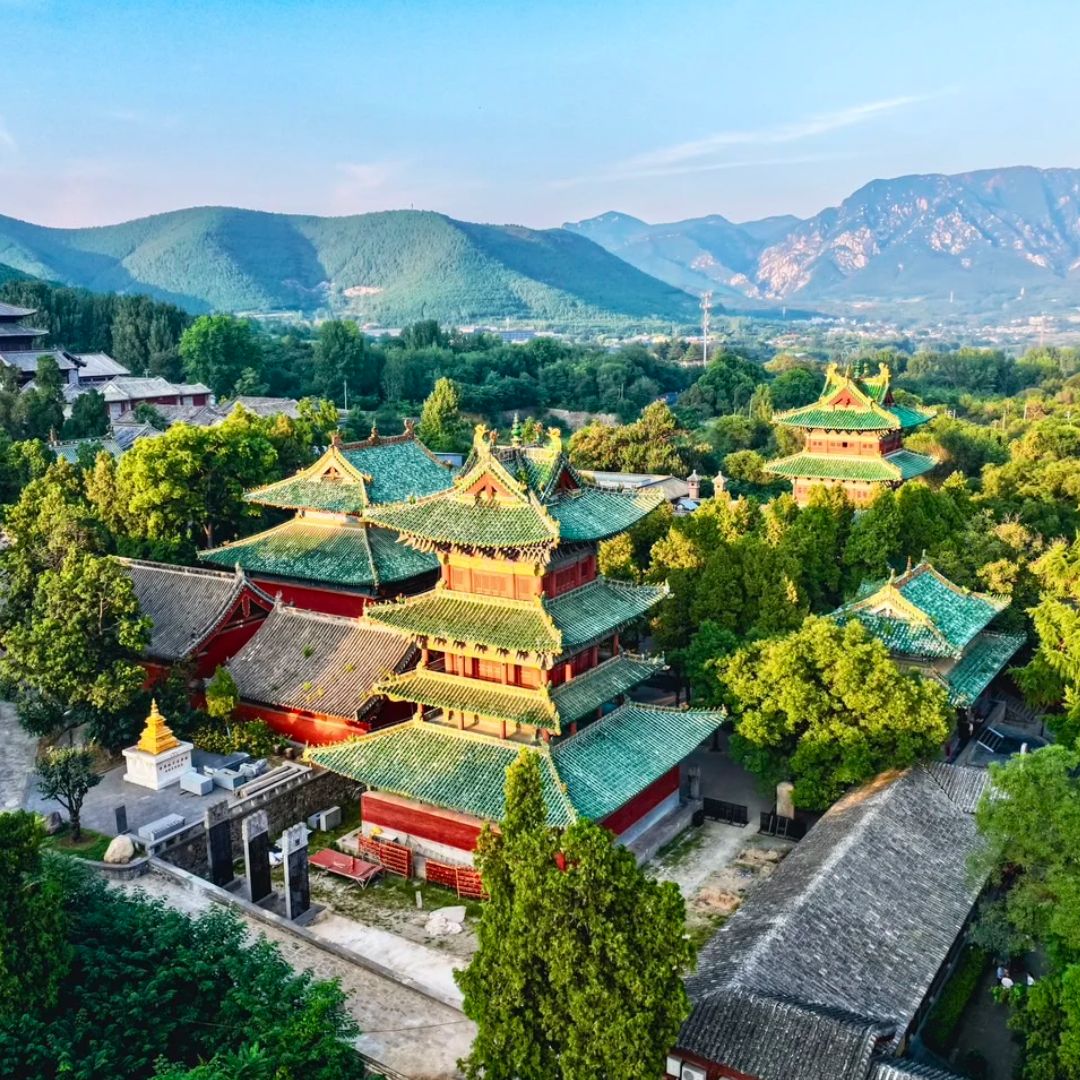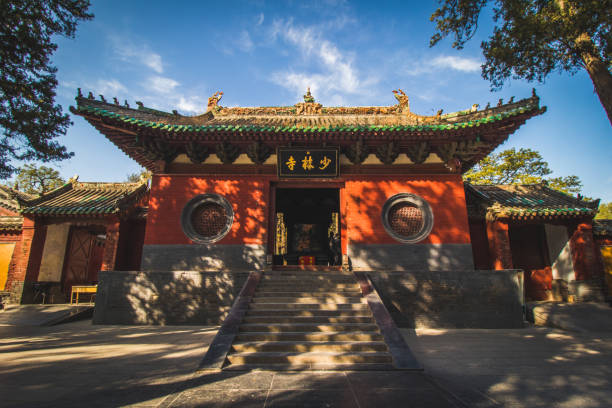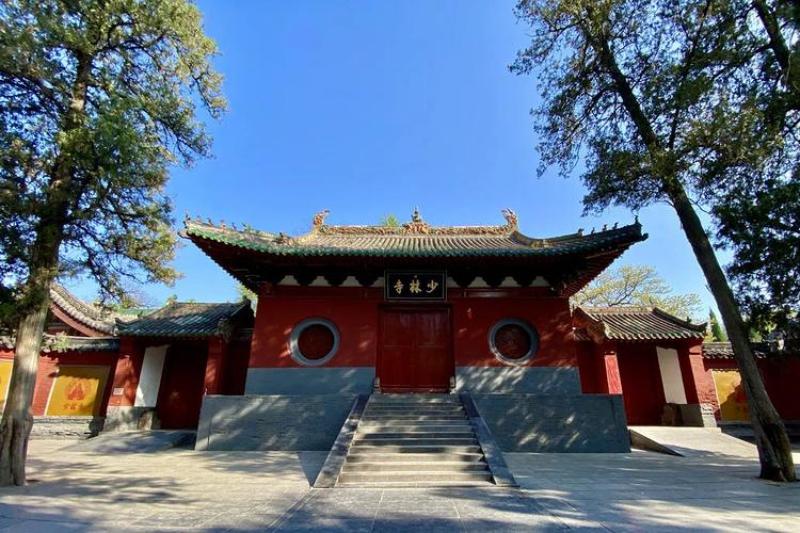Is Shaolin Temple the Ultimate Destination for Martial Arts Lovers?
An Essential Guide to Visiting Shaolin Temple
Welcome to a journey unlike any other, where the echoes of ancient wisdom resonate through the towering trees of Shaoshi Mountain and the spirit of martial arts pulses in the very air you breathe. Nestled in the serene landscapes of Henan Province, Shaolin Temple isn’t just a historical site; it’s the birthplace of Kung Fu and a sanctuary of Zen, drawing travelers and martial arts enthusiasts from every corner of the globe. As you step through the grand Mountain Gate, a remarkable sense of reverence envelops you, inviting you to explore the temple’s rich heritage and spiritual legacy.
In this essential guide, you’ll uncover the hidden gems of Shaolin Temple, from its breathtaking architectural marvels like the Hall of Heavenly Kings to the tranquil Sutra Library, home to millions of Buddhist texts. Discover the temple’s profound connection to martial arts and spirituality, delve into the fascinating stories of its revered patriarchs, and learn how to navigate your visit with ease. Whether you’re here to train in Kung Fu, meditate in serene courtyards, or simply soak in the rich history, this guide will ensure your pilgrimage to Shaolin Temple is an unforgettable experience that transcends time and tradition.
In This Guide
- An Essential Guide to Visiting Shaolin Temple
- The Rich History and Legends of Shaolin Temple
- Main Highlights: What You Absolutely Can’t Miss
- Planning Your Visit: A Practical Guide
- Tickets: Prices, Booking, and Tips
- How to Get There: A Complete Transportation Guide
- Local Cuisine and Accommodation Nearby
- Frequently Asked Questions
- Final Thoughts on Your Trip
The Rich History and Legends of Shaolin Temple
A Glimpse into the Origins
Shaolin Temple, founded in 495 AD during the Northern Wei Dynasty, is not just a site of spiritual significance but a crucible of Chinese culture and martial arts. Emperor Xiaowen commissioned the temple to honor the Indian monk Batuo, who played a crucial role in introducing Buddhism to China. This early establishment marked the beginning of a rich heritage that would intertwine religion, philosophy, and martial practices, creating a legacy that reverberates through the ages.
The Rise of Zen Buddhism
As centuries passed, Shaolin Temple evolved into the epicenter of Zen Buddhism in China. It was here that the teachings of Bodhidharma, the temple’s legendary patriarch, took root. According to popular legend, Bodhidharma traveled to China from India, bringing with him profound insights into meditation and physical discipline. His arrival in the 6th century heralded the fusion of martial arts with spiritual practice, giving rise to the idea that physical training could enhance mental clarity and enlightenment.
The Flourishing of Martial Arts
By the Tang Dynasty (618-907 AD), Shaolin Temple had established itself as the birthplace of Kung Fu. The legends surrounding its martial arts prowess flourished, with tales of monks performing extraordinary feats. One of the most famous stories is that of the “18 Lohan Hands,” a set of martial techniques said to have been developed by Bodhidharma himself. These techniques not only emphasized physical strength but also the cultivation of inner peace and wisdom, showcasing the duality of Shaolin’s philosophy.
The Golden Age of Shaolin
The temple reached its zenith during the Song Dynasty (960-1279 AD), when it became renowned not just for its monastic life but also as a military training ground. The monks of Shaolin, equipped with martial skills, played pivotal roles in defending the empire against invasions. One of the most celebrated legends from this era recounts how a group of Shaolin monks fought valiantly against the enemies of the Song Dynasty, showcasing their unparalleled fighting techniques and valor.
Trials and Resilience
However, the history of Shaolin Temple is not without hardship. During the Qing Dynasty (1644-1912), the temple faced destruction and persecution. One of the most notable events was the burning of the temple in 1723 due to its association with rebellion against the ruling dynasty. Yet, the spirit of Shaolin endured. The monks rebuilt their sanctuary amidst adversity, demonstrating resilience and a commitment to preserving their traditions.
Shaolin in the Modern Era
With the advent of the 20th century, Shaolin Temple transformed into a global symbol of martial arts and Zen Buddhism. In 1982, the temple was revitalized with the support of the Chinese government, which recognized its cultural and historical significance. Today, it stands as a UNESCO World Heritage site, attracting visitors from around the world who seek to connect with its rich legacy.
The Legacy of Shaolin Legends
Throughout its storied history, Shaolin Temple has inspired countless legends that continue to captivate the imagination. One such tale involves the monk Huike, who famously demonstrated his dedication to Zen by cutting off his own arm to gain Bodhidharma’s attention and teachings. This story exemplifies the profound devotion and sacrifice that characterize the Shaolin way.
A Living Heritage
Today, Shaolin Temple is not merely a relic of the past; it is an active center of learning and cultural exchange. Under the guidance of the current abbot, Shi Yongxin, the temple continues to share its teachings with the world, promoting both martial arts and the philosophy of Zen. Visitors can witness daily rituals, partake in training sessions, and experience the harmonious blend of spirituality and physical discipline that has defined Shaolin for centuries.
As you step into the grounds of Shaolin Temple, you are not just visiting a historical site; you are walking through a living testament to the resilience, philosophy, and martial prowess that have defined this extraordinary sanctuary for over 1,500 years.

Shaolin Temple.
Main Highlights: What You Absolutely Can’t Miss
The Mountain Gate: Your Grand Entrance
As you arrive at Shaolin Temple, the first thing to greet you is the majestic Mountain Gate, originally constructed in 1735 and recently restored. This iconic entrance, adorned with inscriptions from Emperor Kangxi, sets the tone for your exploration. Make sure to snap a few photos of the two formidable stone lions that stand guard at the entrance, symbolizing strength and protection. Stepping through this grand gateway marks the beginning of your journey into the heart of Zen and martial arts.
Tip: Arrive early to avoid the crowds and capture the serene beauty of the gate in the morning light.
The Hall of Heavenly Kings: A Colorful Sanctuary
Step into the vibrant Hall of Heavenly Kings, where the Four Heavenly Kings are depicted as powerful guardians of the temple. The hall’s vivid red and green colors create an inviting atmosphere, while the majestic vajra statues embody strength and protection. This space introduces you to the spiritual essence of Shaolin, making it a perfect starting point for your temple journey.
Tip: Take a moment to reflect on the powerful energy of this hall—it’s a great spot for meditation before continuing your exploration.
Mahavira Hall: The Heart of Worship
Rebuilt in 1986, Mahavira Hall is the main Buddhist hall of Shaolin Temple, housing stunning statues of Shakyamuni, the Medicine Buddha, and Amitabha. Each figure represents a different path to enlightenment, while the serene surroundings invite deep contemplation. Don’t miss the chance to admire the Eighteen Arhats and the tranquil Guanyin statue, which together create a space of peace and reflection.
Tip: Visit during prayer times to experience the hall’s spiritual ambiance, filled with the calming sounds of chanting monks.
Sutra Library: A Treasure Trove of Knowledge
Home to over eight million Buddhist texts, the Sutra Library is a must-visit for those interested in the scholarly side of Shaolin’s legacy. Here, you can admire unique artifacts like the exquisite white jade Buddha and a historic iron pot, each telling its own story of devotion and wisdom. The tranquil atmosphere encourages visitors to pause, reflect, and immerse themselves in Shaolin’s rich Buddhist heritage.
Tip: Bring a notebook to jot down your thoughts and reflections; the library’s serene environment is perfect for inspiration.
The Pagoda Forest: A Historical Marvel
Venture into the Pagoda Forest, a breathtaking collection of ancient stone pagodas that date back to the Tang and Song dynasties. This site showcases the burial place of revered monks and serves as a testament to Shaolin’s long-standing traditions. Each pagoda is unique, offering a glimpse into the architectural styles of various dynasties and the deep respect for the monks who built them.
Tip: Take your time walking through this peaceful area; each pagoda has its own story, and you may find a quiet spot to meditate amidst the ancient trees.
Dharma Cave: A Sacred Retreat
Nestled in the mountains surrounding the temple, Dharma Cave holds immense significance as the meditation retreat of Bodhidharma, the founder of Zen Buddhism. The cave is a spiritual sanctuary where he practiced for nine years. As you approach, you’ll feel a palpable sense of tranquility that invites introspection and connection to the Zen philosophy.
Tip: Bring a small offering or a prayer to leave at the entrance of the cave as a gesture of respect and gratitude for the teachings of Bodhidharma.
Bell and Drum Towers: The Pulse of Shaolin
Rebuilt in the 1990s, the Bell and Drum Towers stand as architectural highlights of the temple complex. The melodious chimes of the Bell Tower and the vibrant beats of the Drum Tower mark the passage of time and the daily rituals of the monks. These towers not only enhance the temple’s beauty but also connect you to its living traditions.
Tip: Plan your visit around the ringing of the bell or the beating of the drum—experiencing these sounds in person is a powerful reminder of Shaolin’s vibrant spiritual life.
Embark on your Shaolin adventure armed with these highlights, and immerse yourself in the rich tapestry of history, spirituality, and martial arts that this sacred site offers.

Shaolin Temple.
Planning Your Visit: A Practical Guide
Best Time to Visit
The ideal time to visit Shaolin Temple is during the spring (April to June) and autumn (September to November) months. During these seasons, the weather is typically mild and pleasant, perfect for exploring the temple and its surrounding natural beauty. Avoid the sweltering heat of summer, when temperatures can soar, and the crowds that flock during the peak tourist season. If you’re interested in experiencing local festivities, consider planning your visit around March 21, recognized as “Songshan Shaolin Temple Day,” which includes cultural celebrations and events.
Recommended Itinerary
Day 1: Arrival in Dengfeng
– Morning: Arrive in Dengfeng via train or bus from Zhengzhou. Check into your accommodation.
– Afternoon: Head to Shaolin Temple. Start with a visit to the Mountain Gate and explore the Hall of Heavenly Kings.
– Evening: Enjoy a Kung Fu performance at the temple, showcasing the martial arts legacy of Shaolin.
Day 2: Deep Dive into History and Culture
– Morning: Visit the Mahavira Hall and Sutra Library. Take time to appreciate the intricate statues and texts.
– Afternoon: Explore the Pagoda Forest and Dharma Cave, where you can learn about the historical significance of these sites.
– Evening: Dine at a local restaurant and try traditional Henan cuisine.
Day 3: Nature and Reflection
– Morning: Hike in the scenic Shaoshi Mountain area surrounding the temple. Enjoy the serene forests and beautiful landscapes.
– Afternoon: Participate in a meditation or Kung Fu class to immerse yourself in the Shaolin experience.
– Evening: Reflect on your journey while enjoying the tranquil atmosphere of the temple grounds at dusk.
Photography Tips
- Golden Hour: The best time for photography is early morning or late afternoon. The soft light enhances the temple’s architecture and natural surroundings.
- Respect the Space: While taking photos, be mindful of the sacred atmosphere. Avoid using flash in prayer areas and during performances.
- Capture the Details: Focus on the intricate carvings, statues, and natural landscapes. Close-ups can reveal the unique artistry of Shaolin Temple.
- People in Action: Document the monks practicing Kung Fu for dynamic shots that convey the spirit of the temple.
- Wide Shots: Use a wide-angle lens to capture the expansive grounds, especially during serene moments when fewer visitors are around.
What to Wear
- Comfortable Footwear: Since you’ll be exploring vast grounds and possibly hiking, wear comfortable walking shoes or sneakers.
- Layered Clothing: Dress in layers as temperatures can fluctuate throughout the day. A light jacket is advisable for cooler mornings and evenings.
- Respectful Attire: As a sacred site, wear modest clothing. Avoid shorts and sleeveless tops, especially in prayer areas.
- Sun Protection: Don’t forget sunscreen, sunglasses, and a hat, particularly during the summer months when the sun can be intense.
Insider Tips
-
Learn Basic Mandarin: Familiarize yourself with a few simple Mandarin phrases. This can enhance your interactions with locals and make your experience more enjoyable.
-
Stay Hydrated: Carry a water bottle with you, especially during your explorations. There are limited options for refreshments inside the temple grounds.
-
Explore Beyond the Temple: Take some time to visit nearby attractions, such as the Dengfeng Observatory and the Shaolin Kung Fu Museum, which provide deeper insights into the region’s cultural significance.
-
Engage with Monks: If you’re interested in Kung Fu, consider attending a class or workshop. Many monks offer lessons that provide a unique opportunity to learn directly from the masters.
-
Respect the Local Culture: Be mindful of the sacredness of the temple. Always ask for permission before photographing individuals, especially monks, and maintain a respectful demeanor while on temple grounds.
With these practical tips in hand, your visit to the Shaolin Temple promises to be an unforgettable journey through history, culture, and spirituality. Enjoy your adventure!

Shaolin Temple.
Tickets: Prices, Booking, and Tips
When planning your visit to the Shaolin Temple, understanding the ticket options and booking process can enhance your experience. Here’s a breakdown of the ticket types, their prices, and what each includes, along with some helpful tips for booking.
| Ticket Type | Price (CNY) | Includes |
|---|---|---|
| Adult Ticket | 100 | Access to main temple grounds, pagoda forest, and key historical sites within the temple complex. |
| Student Ticket | 50 | Discounted access for students (ID required). Includes the same as the adult ticket. |
| Group Ticket | 80 (per person for groups of 20 or more) | Access as per adult ticket, available for organized groups. |
| Kung Fu Show Ticket | 150 | Entry to a spectacular Kung Fu performance at the temple. |
| Combined Ticket | 220 | Includes both entry to the temple and the Kung Fu show. |
Booking Your Tickets
Booking your tickets in advance is highly recommended, especially during peak tourist seasons or holidays. Here’s how to secure your entry:
-
Online Booking: You can purchase tickets through various travel websites or directly from the official Shaolin Temple website. This is often the easiest and most convenient option.
-
At the Venue: If you prefer to buy tickets on-site, be prepared for potential long lines, especially during weekends and holidays. Arriving early can help you avoid the crowds.
-
Travel Agencies: Consider booking through a travel agency, which may offer package deals that include transportation and guided tours, providing a more seamless experience.
-
WeChat and WhatsApp: For those already in China or familiar with local apps, you can also book tickets through WeChat or WhatsApp by contacting local travel services.
Tips for a Smooth Experience
- Advance Booking: Always book your tickets in advance where possible to ensure availability and save time.
- Check for Discounts: If you are a student or traveling in a large group, inquire about discounts that might apply.
- Plan Your Visit: Allocate enough time to explore the vast temple grounds, as there is much to see and experience.
With careful planning and booking, your visit to Shaolin Temple promises to be an unforgettable journey through history, culture, and martial arts. Enjoy your adventure!
How to Get There: A Complete Transportation Guide
Getting to the Legendary Shaolin Temple
Visiting the Shaolin Temple, the birthplace of Kung Fu and a UNESCO World Heritage site, is an adventure that promises to connect you with ancient traditions and breathtaking landscapes. Below is a comprehensive guide to help you navigate your way to this remarkable destination.
From the Nearest Major City: Zhengzhou
By Train:
The most convenient way to reach Shaolin Temple is by first traveling to Zhengzhou, the capital of Henan Province. High-speed trains frequently run from major cities like Beijing and Shanghai.
-
From Beijing:
- Train Type: High-Speed Train (G series)
- Duration: Approximately 4 to 6 hours
- Cost: Ranges from ¥500 to ¥800 (around $70 to $110) for a second-class seat.
- Departure: Trains depart from Beijing West Railway Station, with multiple options throughout the day.
-
From Shanghai:
- Train Type: High-Speed Train (G series)
- Duration: Approximately 5 to 6 hours
- Cost: Ranges from ¥500 to ¥800 (around $70 to $110) for a second-class seat.
- Departure: Depart from Shanghai Hongqiao Railway Station.
By Bus:
If you prefer a more budget-friendly option, buses are available from various cities to Zhengzhou, though they take longer.
- Duration: 8 to 10 hours, depending on traffic.
- Cost: Approximately ¥150 to ¥300 (around $20 to $40).
- Departure Points: Buses leave from major bus stations; check local listings for schedules.
From Zhengzhou to Dengfeng
Once you arrive in Zhengzhou, your next step is to get to Dengfeng, the closest city to the Shaolin Temple.
By Bus:
– Duration: About 1 hour.
– Cost: Approximately ¥20 to ¥30 (around $3 to $5).
– Departure Point: Buses to Dengfeng depart from the Zhengzhou Long-distance Bus Station, and they run frequently throughout the day.
By Taxi:
For a more direct and comfortable option, you can take a taxi.
- Duration: Approximately 1 hour.
- Cost: Ranges from ¥150 to ¥200 (around $20 to $30).
- Note: It’s advisable to have the name of your destination written in Chinese to show your driver.
Getting to Shaolin Temple from Dengfeng
Once you are in Dengfeng, getting to the Shaolin Temple is straightforward.
By Bus:
– Duration: About 15 to 20 minutes.
– Cost: Approximately ¥5 (less than $1).
– Departure Point: Local buses leave regularly from Dengfeng Bus Station, heading directly to the Shaolin Temple.
By Taxi:
You can also opt for a taxi for convenience.
- Duration: Approximately 15 minutes.
- Cost: Ranges from ¥40 to ¥60 (around $6 to $10).
- Tip: Knowing the Chinese characters for “Shaolin Temple” will help you communicate with the driver.
Getting Around the Scenic Area
Once you arrive at the Shaolin Temple, the expansive grounds and surrounding natural beauty can be explored on foot, but there are other transportation options available.
On Foot:
– The temple complex is designed for walking, with many paths leading to significant sites like the Pagoda Forest and Dharma Cave.
Bicycles:
– Some local shops offer bicycle rentals, providing a fun way to explore the surrounding countryside at your own pace.
Guided Tours:
– If you prefer a structured experience, consider joining a guided tour. Many local operators offer packages that include transportation, entrance fees, and knowledgeable guides who can share the rich history of the temple.
By following this guide, you can seamlessly navigate your journey to the Shaolin Temple and immerse yourself in its storied past and stunning surroundings. Prepare for an adventure that intertwines culture, spirituality, and martial arts!

Shaolin Temple.
Local Cuisine and Accommodation Nearby
When visiting the Shaolin Temple, immersing yourself in the local cuisine and finding the perfect place to rest after a day of exploration is vital to enhancing your experience. Here’s a guide to some delicious local dishes and a variety of accommodation options nearby.
Local Cuisine
-
Shaolin Tofu (少林豆腐)
A local specialty, this dish features silky smooth tofu prepared in a variety of styles, often stir-fried with seasonal vegetables and a splash of soy sauce. The freshness of the ingredients highlights the simplicity and flavor of this traditional dish, making it a favorite among both locals and travelers. -
Dengfeng Wheat Noodles (登封面条)
These hand-pulled noodles are a staple in the region. Often served in a rich broth with tender meat and a medley of vegetables, they are both hearty and satisfying. You can find various versions, but the spicy rendition, topped with chili oil and garlic, is particularly popular. -
Kung Pao Chicken (宫保鸡丁)
Though known worldwide, the local take on Kung Pao Chicken features tender chicken cubes stir-fried with peanuts, vegetables, and a special blend of spices, offering a delightful balance of sweet, salty, and spicy flavors. It’s a perfect dish to fuel up before your Kung Fu training or exploration of the temple grounds. -
Steamed Buns (包子)
These fluffy, doughy buns are filled with a variety of ingredients, such as pork, vegetables, or red bean paste. They are often sold from street carts around Dengfeng and make for a quick snack or breakfast option as you head to the temple.
Accommodation Options
-
Luxury: Shaolin Temple International Hotel
For travelers seeking an upscale experience, the Shaolin Temple International Hotel offers modern amenities, elegant rooms, and stunning views of the surrounding mountains. With a restaurant serving both local and international cuisine, it’s an ideal place to relax in comfort after a day of sightseeing. -
Boutique: Dengfeng Shaolin Zen Hotel
This charming boutique hotel captures the essence of Shaolin culture with its decor and ambiance. With comfortable rooms that blend traditional design with modern conveniences, the hotel also features a tranquil garden and a meditation area, perfect for unwinding after your adventures. -
Budget: Dengfeng Youth Hostel
For budget-conscious travelers, the Dengfeng Youth Hostel provides a friendly atmosphere and affordable dormitory-style accommodations. It’s a great place to meet fellow travelers, and the staff can help arrange tours and transportation to the Shaolin Temple. -
Mid-Range: Shaolin Temple Guesthouse
Located just a short distance from the temple, this guesthouse offers basic yet comfortable rooms at a reasonable price. The on-site restaurant serves delicious local dishes, making it a convenient spot to experience authentic flavors after a day of exploration.
No matter your taste or budget, you’ll find plenty of options to enjoy the local flavors and rest comfortably during your visit to the legendary Shaolin Temple!

Shaolin Temple.
Frequently Asked Questions
-
Is Shaolin Temple suitable for children and the elderly?
Yes, Shaolin Temple is generally suitable for children and the elderly. The grounds are spacious and provide several resting areas. However, some pathways can be steep, so it’s advisable for elderly visitors or those with mobility issues to take their time and consider using a walking aid if needed. Children will enjoy the fascinating history and the martial arts demonstrations. -
Are there English signs and guides available?
Yes, you can find English signs throughout the temple grounds, making navigation easier for non-Chinese speakers. Additionally, many local guides offer tours in English, providing insightful information about the temple’s history and significance. -
How much time should I plan to spend at Shaolin Temple?
It is recommended to allocate at least half a day (4-6 hours) to fully explore Shaolin Temple and its surroundings. This allows ample time to visit the main halls, watch martial arts performances, and enjoy the serene atmosphere of the temple. -
What is the best time of year to visit Shaolin Temple?
The best time to visit is during the spring (April to June) and autumn (September to November) when the weather is mild and the natural scenery is particularly beautiful. Summer can be quite hot, and winter may be chilly, so plan your visit accordingly. -
Are there any entry fees or ticket costs?
Yes, there is an entry fee to access the temple complex. As of the latest update, the ticket price is approximately 100 Yuan (around $15 USD). This fee may vary depending on the season and any special events, so it’s best to check ahead of your visit. -
Can I participate in martial arts training at the temple?
Absolutely! Shaolin Temple offers various martial arts training programs for visitors of all skill levels. If you’re interested, inquire ahead about classes or workshops that may be available during your visit. -
What amenities are available at Shaolin Temple?
The temple complex has several amenities, including restrooms, food stalls, and souvenir shops. However, dining options may be limited within the temple grounds, so you might consider exploring nearby Dengfeng for a wider variety of meals. -
How do I get to Shaolin Temple from Zhengzhou?
To reach Shaolin Temple from Zhengzhou, you can take a bus or taxi to Dengfeng, which is approximately 70 kilometers away. The journey typically takes about 1 to 1.5 hours. Once in Dengfeng, the temple is just a short taxi or bus ride away. Be sure to have the name of the temple written in Chinese to show to the driver for ease of communication.
Final Thoughts on Your Trip
As your journey through the Shaolin Temple comes to a close, take a moment to reflect on the profound experiences that await at this iconic site. From the tranquil pathways lined with ancient steles to the awe-inspiring halls where centuries of Zen and martial arts converge, each corner of the temple whispers stories of dedication, strength, and enlightenment.
Whether you were drawn here for the rich cultural heritage, the spiritual ambiance, or the allure of Kung Fu, you have ventured into a realm that transcends time and space. The majestic architecture, the serene atmosphere, and the teachings of the monks offer a unique opportunity for personal growth and introspection.
As you leave this sacred ground, carry with you not just memories of the breathtaking vistas and historic sites, but also a renewed sense of purpose and determination. Let the spirit of Shaolin inspire you to embrace your own journey—whether it be in martial arts, meditation, or simply navigating life’s challenges. Remember, every step you take is part of a larger path, one that invites you to explore, learn, and grow. Until your next adventure, may the wisdom of Shaolin guide you forward!